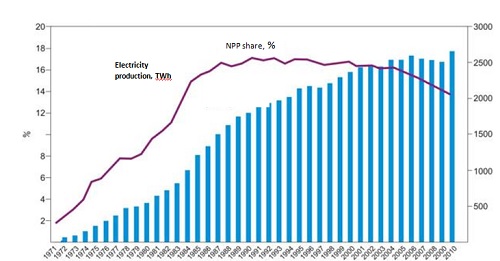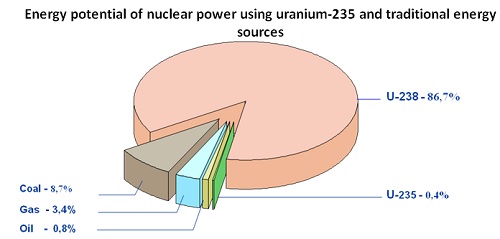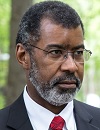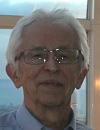 |
||
|
Victor Murogov: The History of Nuclear Science and Technology. Theses of Simplified Analysis. Victor Murogov, PUBLISHED 08.10.2018 Introduction If we talk about the history of the nuclear science and technology, which determined the creation and the development of nuclear weapons and, then, nuclear power, we must return more than 100 years ago, in the early 20th century. Then, the neutron was not yet discovered, there was no acceptable theory of the structure of atomic nucleus, and the possibility of a chain reaction of nuclear fission was not even discussed, but already in 1912 the outstanding Russian scientist Vladimir Ivanovich Vernadsky made a report at the Russian Academy of Sciences concerning the new nuclear forces on the basis of research of radioactive radium. At that time there were well-known experiments of the Nobel Prize winners Maria Sklodowska-Curie and Pierre Curie. Vladimir Vernadsky understood that the discovered nuclear forces were a million time more effective than the then known chemical forces. And, based on this, he suggested that humanity entered a new era when there was no restriction of access to energy, and all problems of nutrition, health, industrial and social development would be resolved. It was one of the first predictions about the coming "Golden age" of mankind on the basis of scientific and technological revolution. However, later in 1922 he comprehended, for the first time, the tragic drama of this discovery leading not only to a bright future, but also to the possibility of destruction of humanity itself. From "Curiosity" of Scientists to State Projects In 1939, two physics of the Hungarian emigre Leo Szilard and E. Wigner prompted Albert Einstein to write to US President Franklin D. Roosevelt a letter and explain the need for the development of the "Atomic project" in America in contrast to the developments in Nazi Germany. Scientists understood that nuclear forces were a source of powerful forces of good and evil, and therefore advocated the need for state control over this technology. President Roosevelt took this letter very seriously, and a few months later in the United States the Uranium Committee was established, which subsequently initiated the Manhattan Atomic Project. In December 1942, the team led by the Italian scientist Nobel Prize winner (physics) Enrico Fermi launched the world's first uranium-graphite nuclear reactor (CP-1, Chicago Pile 1). Then this reactor was dismantled and transferred to the Argonne National Laboratory (ANL), established in the US, and called CP-2. Two years later in 1944, the world's first heavy-water reactor CP-3 was launched in the ANL. A fundamentally important step was the launch by Enrico Fermi's followers in the ANL of the world's first fast neutron reactor (without moderator) Clementine (CP-4) in which liquid metal mercury was used for the first time as the cooling liquid. The Making of the Atomic Bomb One step remained from the creation of nuclear reactors to the making of an atomic bomb. But to make an atomic bomb, fissile material of high concentration is required. Centrifuge enrichment has proved to be the most effective and, looking ahead, we can say that thanks to the efforts of domestic scientists and designers, now our country occupies a leading position in the world in terms of the production of enriched uranium (the 9th generation of centrifuges has already been constructed in Russia). That is, the outstanding defense development now provides to our country up to 30-40% of the world nuclear enrichment market for nuclear power. (The picture is similar to the share of world gas reserves in our country). In July 1945, the first bomb called Trinity was detonated in the United States. This explosion marked the beginning of the nuclear age. The next two nuclear bombs were detonated over Japan. The successful test of nuclear weapons focused the efforts of scientists, engineers and technologists of the Allied countries on the priority state task of survival: the creation of arsenals of nuclear weapons and their delivery means. The development of nuclear energy and the advent of the "Golden Age" of energy well-being went to the "shoulder" of state scientific and technological progress. Atomic Project in the USSR To solve the atomic problem, it was necessary to involve experts from a wide range of fields of science and technology: metallurgists, mechanics, chemists, biologists, textile workers and glass specialists. The problem was complex, and it could be solved only by combining the maximum number of people most knowledgeable in the field of science and technology. To solve this complex, important problem, all the forces of the country were thrown, and all necessary conditions were created. In August 29, 1949 (at 7:00 am, local time), the first Soviet nuclear bomb RDS-1 was detonated at the Semipalatinsk test site. More than 3,500 people were awarded government prizes for their contribution to this victory. Thus, the task of creating nuclear weapons in the USSR and liquidating the nuclear monopoly was, basically, solved. Later, during the "cold war" and as a result of the nuclear arms race, more than 1500 nuclear tests were conducted in the world, and totally more than 85,000 nuclear charges were created in the United States and the USSR. Simultaneously, in the USA and in the USSR the problem of delivering nuclear weapons was being solved. Huge material, technical means and financial resources were spent to create more than 500 nuclear submarines with approximately 1,000 nuclear reactors and rockets with nuclear charges. The number of states possessing nuclear weapons, the "nuclear powers", began to grow: after the United States and the USSR, Great Britain, France and China entered the Nuclear Club. There was a danger of proliferation of nuclear weapons. Peaceful Atom In 1954, after a long debate, the UN General Conference decided to institute a regime for international control over the development and use of nuclear technologies, and to establish the International Atomic Energy Agency (IAEA) to monitor its implementation. As a first practical step, it was decided to hold the First Geneva Conference on the Peaceful Uses of Nuclear Energy under the auspices of the United Nations, where it would be possible to discuss ways of peaceful uses of nuclear energy. At this conference, a report on the world's first nuclear power plant in the USSR, commissioned in 1954 in Obninsk (5 MWe), with a uranium-graphite reactor cooled by water on enriched uranium (AM-1) produced a real furor. Then in 1956, the world's first commercial Calder Hall nuclear power plant (50 MWe) with a uranium-graphite reactor on natural uranium cooled by carbon dioxide was commissioned in Great Britain. The nuclear reactor was of the MAGNOX-type, designed to produce weapon-grade plutonium. In 1957, the world's first water-cooled reactor of the PWR-type (in Russia, the WWER-type reactor) at the Shippingport NPP (70 MWe) was brought into operation in USA. This reactor type has earlier been developed for nuclear power units of the nuclear submarine fleet, and it currently forms the basis of modern nuclear power engineering. After that, the number of nuclear plants around the world began to grow rapidly, using the "base" created by weapons atomic projects: the fuel base, the entire industrial infrastructure, from uranium mining to nuclear fuel fabrication and its use in the reactor, training, knowledge and experience of specialists. Besides, the world's first nuclear power plants of various types, which were commissioned, were actually the result of "conversion" of developments for military purposes. Industrial development of nuclear power plants By the mid-80s of the 20th century, up to 40 nuclear power units had been built in the world, and the NPP total power reached more than 350 GWe. Everything went fine until 1979, when the biggest accident in the history of commercial nuclear energy occurred in the United States at the Three Mile Island NPP. The accident led to a significant economic crisis in atomic power (more than 200 orders for the construction of new nuclear power plants with PWR reactors, the most popular nuclear reactor type in the world, were canceled). Then in 1986, there was a severe accident at the Chernobyl nuclear power plant, which grew into a nuclear catastrophe with global social and political consequences. First of all, this was the case with the USSR because similar reactors (RBMK reactors) were built only in the USSR. Nevertheless, the negative attitude of European countries sharply increased. Seven small countries made a decision to ban the development of nuclear power. Nuclear power entered the 21st century in a state of stagnation. The process of reviewing the concept of NPP safety and the further development of a "nuclear safety culture" as one of the foundations of atomic energy began. In order to overcome the crisis, in 2000, two international projects were launched. The International Project on Innovative Nuclear Reactors and Fuel Cycles (INPRO), proposed by Russia, was developed under the auspices of the IAEA. The project integrated the efforts of specialists from the developed and nuclear newcomer countries. The purpose of INPRO is to determine the development strategy and requirements for the future nuclear power. The fourth generation project for future nuclear power plants (GIF-4) is aimed at creating innovative reactors that will solve the problems of further development of nuclear power: safety, economic efficiency, unlimited development resources, waste and spent fuel management, and non-proliferation. Participants in this project, proposed by the United States, are only ten countries, most advanced in the nuclear sphere. Unfortunately, due to the most severe nuclear accident in the 21st century, the situation was sharply aggravated. It occurred at the Fukushima NPP in 2011 in Japan, one of the most industrialized and nuclear-advanced countries in the world. The nuclear community must find a way out of an arisen contradiction: the nuclear technology has not yet led the humankind into a golden age of solving energy problems, but it has made it possible to create nuclear weapons potentially capable of destroying humanity. Recently, despite the construction of about 60 new power units in the world, with the annual commission of up to 10 nuclear power units, the nuclear power contribution to the generation of both electricity (now less than 13%) and to the total energy balance is declining (now about 5%). This is not so much due to the decommissioning of obsolete nuclear power units, but due to the faster growth of traditional and alternative energy sources.  Let us summarize this brief, shallow analysis of the history of the nuclear science and technology, and on the other hand, the analysis of the current state of nuclear energy, and the problems that complicate its further full-scale development. In this connection, we face a paradoxical situation: what Pioneer Founders thought it unquestionable advantages of nuclear power, turned into its unresolved problems. 1. Unlimited fuel resources of nuclear power (declared by the Pioneers) have turned into one of the main arguments that do not allow us to consider modern nuclear power to be a stable energy source. Actually, NPPs with pressurized-water reactors (88.5%), such as WWER, PWR and BWR, constitute the basis of modern atomic energy. They use less than 0.5% of the uranium energy potential, which is 2-3 times less than the available oil reserves (see diagram).  2. The principal solution of this problem is well known. When developing nuclear power plants with breeder reactors, for example fast neutron reactors of BN-type, practically, unlimited uranium reserves become available As we know, the first fast neutron reactors cooled by liquid metal, were commissioned at the dawn of nuclear power development: in 1946 (ANL, USA) and in 1956 (BR-2, FEI, USSR).More than 70 years of research and development have passed. Currently, in the world only two fast reactors, Russian BN-600 and BN-800, are in operation, out of total 440 nuclear power units. They use primarily uranium-235 (WWER reactors), and are not considered breeders, since their nuclear fuel cycle (NFC) is not closed (plutonium reprocessed from spent nuclear fuel is not used). 3. The implementation of a closed NFC in modern nuclear power is not just an expensive and complex scientific and technical task. Its implementation at the present stage can lead to an aggravation of the proliferation problem of hazardous nuclear materials and technologies. The fact is that the reprocessing of SNF in a closed nuclear fuel cycle, in addition to the existing "sensitive" uranium enrichment technology, will lead to another "sensitive" technology: radiochemical processing, i.e. to extracting, from the "mountain" of irradiated fuel, of two materials potentially dangerous from the point of view of violation of the non-proliferation regime: plutonium and highly radioactive materials (fission products, actinides, etc.). That is, products potentially suitable for the creation of WMD or "dirty" bombs. 4. A full-scale development of nuclear power on the basis of solving three problems listed above (stability, practical unlimited resources, breeders in a closed nuclear fuel cycle, non-proliferation of "sensitive" materials, technologies and knowledge) is possible only with guaranteed provision of nuclear and radiation safety of nuclear power plants and nuclear fuel cycle enterprises. The analysis of nuclear power development has shown the explicit dependence of the competitiveness of nuclear power on the realization of the above problems. As is known, at the initial stage of nuclear power development using the established defense "nuclear" platform (fuel and industrial infrastructure, education and training of personnel), the cost of installed capacity of NPPs with pressurized-water reactors was about 200 USD/kW. The current value is up to 4,000 USD/kW. What is the main reason for such a huge growth (except for inflation) - 20 times? According to the NRC (United States), the need to meet the increasing requirements of "engineering" safety alone has led to an annual increase in the cost of generating electricity at nuclear power plants by 10-12%. Given the additional "penalty payments" for nuclear power that does not exist for traditional energy, the "market" (market economy) begins to get rid of this non-competitive technology. In the US four NPPs were decommissioned for economic reasons in the last year alone. It is efficient from a market perspective. But in fact, the practical use of nuclear energy began as a major state task. And that is how it continues in the field of nuclear weapons. And the nuclear power was left to the mercy of the market.5. The problem of nuclear waste. At the initial stage of peaceful use of nuclear power, nuclear waste was considered to be an advantage of nuclear power because of its high concentration, limited volume (with the possibility of strict accounting, control and isolation) and gradual radioactive decay. But the presence of long-lived high-active fragments and actinides (primarily plutonium) requires a long-term controlled radioactive waste disposal for hundreds of thousands and millions of years which has no analogues in the history of mankind. Not by accident, the IAEA has elaborated a priority program for the preservation of nuclear knowledge for the next generation, including for the unique long-term preservation of knowledge on the waste disposal. As for the technology of long-lived high-active isotope transmutation, this process requires special fast reactors with a large excess of neutrons (so-called fast burner reactors), which so far exist only at a conceptual level. An analysis of the history of the nuclear science and technology development makes us ponder over a century-old prophesy made by Academician Vladimir Ivanovich Vernadsky on the global consequences of the nuclear technology development and implementation. 6. Climate and oxygen burning: the role of nuclear energy (Based on the proceedings of the Workshop held in June 26, 2018 Obninsk : "The anniversary of the startup of the world's first nuclear power plant ".) Thus, on the one hand, the analysis shows that we have a global effect in the form of a modern nuclear weapon system, on the other - the development of modern nuclear energy has met with a number of problems that impede its full-scale development up to the level determining a global energy development. At the same time, the challenges facing humanity, determined by the technogenic activity, require precisely global changes that go beyond the framework of market relations. That is, we are talking about the need to introduce state regulation in economic activities (including industry, transport, and agricultural production). In fact, the first step was the establishment under the auspices of the United Nations of an international nuclear regime (the foundation of the IAEA, NPT, etc.). It was followed by Kyoto Protocol and the Paris Agreement, imposing certain restrictions on the technogenic activities of the Sates signatories. "Thousands of cubic kilometers of hydrogen, methane and other gases are regularly released into the atmosphere, including carbon dioxide and water vapor during volcanic activity and catastrophic fires, as well as during technogenic activities that create a greenhouse effect on the planet Earth! In the atmosphere, water vapor is "sequestered" by its gradual condensation, and carbon dioxide has been "sequestered" for many millennia in the biomass of the plant world as a result of the reaction of photosynthesis with the formation of molecular atmospheric oxygen, the energy basis of our present civilization: 6CO2 + 6H2O + SOLAR ENERGY = C6H12O6+ 6O2 From the energy point of view, photosynthesis is the process of accumulating light energy into the potential chemical energy of the photosynthesis products' interaction: carbohydrates and atmospheric oxygen." (Boldyrev V.M.) Along with the widely discussed "greenhouse" problem of accumulation of carbon dioxide, water vapor, methane, etc. in the atmosphere, the protection of atmospheric oxygen from its industrial consumption is now a priority in the field of regulation of the relationship between man and nature! Most industrialized countries have long become "parasitic" countries, where industrial consumption of atmospheric oxygen in their territory repeatedly exceeds its reproduction (pure primary production) by natural vegetation. Russia, Canada, Scandinavian countries, Australia, Indonesia, and other countries are "donors" who supply gratuitously the "parasitic" countries with their oxidizer - atmospheric oxygen. In Western Europe, industrial use of oxygen is 5-6 times greater than its "vital" human breath consumption. As a result of photosynthesis, atmospheric oxygen must be permanently and continuously restored by the planet's vegetation in a volume that takes into account its anthropogenic uptake. Today, the industrial consumption of atmospheric oxygen at fossil fuel combustion is approaching 40×109 tons/year, and together with its annual consumption by nature (some 165×109 tons) has far exceeded the upper bound of the assessment of its reproduction by nature. Today, a priority task in the field of regulation of the relationship between man and nature is the protection of atmospheric oxygen reserves from its industrial consumption! Today, the global environmental crisis, which was inevitably caused by the large-scale development of energy using fossil fuel, leaves no alternative but to develop a safe and efficient nuclear energy! But in order to fulfill its global role, nuclear energy must be comparable in scale to traditional energy using fossil fuels. In accordance with estimates made by Salvatores M. et al., to accomplish this task, the nuclear power plants' installed capacity should be at least 10,000 GWe by 2100. Moreover, the development, for example, of transport electrification, if it is to be carried out on the basis of traditional fossil fuel plants, will only significantly aggravate the situation with regard to "greenhouse" effect and oxygen burning. The International Energy Agency (IEA) has held a high-level meeting to identify the key issues faced by nuclear energy and to explore its future /July 2018/. The nuclear industry has set the Harmony goal for nuclear energy to provide 25% of global electricity by 2050. This will require a tripling of nuclear generation from its present level. Some 1000 GWe of new nuclear generating capacity will need to be constructed by then to achieve that goal. World Nuclear Association has identified three areas for action to achieve this: establishing a level playing field in electricity markets, building harmonized regulatory processes, and an effective safety paradigm. Such a level of capacity will require a fundamentally new level of assurance of nuclear and radiation safety, nonproliferation and education of professionals and population as a whole. Achieving such a level of development of an acceptable nuclear energy will require a fundamentally new concept for the development of nuclear power. As is known, the technological progress is developing in accordance with the Grosch's law, under which "if the technical system is improved on the basis of an unchanging scientific and technical principle, then with the attainment of a certain level of its development, the value of its new models is proportional to the square of its effectiveness." "In other words, it is impossible to design a competitive new NPP unit without changing the scientific and technical principles, as done, for example, in the Russian WWER-TOI project, which was revised rather superficially and casually". /Boldyrev V.M/. 29 September 2018 Viktor M. Murogov
1. Boldyrev V.М. "Renewable energy sources, fossil fuel and environmentally friendly nuclear energy", report at the Tenth International Scientific and Technical Conference "Safety, Efficiency and Economics of Nuclear Energy", Moscow. May 25-27, 2016. 2. IEA meeting considers future of nuclear. World Nuclear News, July 2018. 3. Salvatores M. at al. "How much can nuclear energy do about global warming". Int. J. Global Energy Issues. Vol 40, No ?, 2017. 4. Climate Change and Nuclear Power 2018 . IAEA. Vienna. September 2018. 5. Scientific Forum IAEA 2018, " Nuclear Technology for Climate: Mitigation, Monitoring and Adaptation" . Session 1: "Role of nuclear power in limiting CO2 - emissions ". Panel Discussion: "Innovation in the future expansion of nuclear power". Vienna . 2018. 6. Murogov Viktor M. "Nuclear Technology: History , State and Technical Challenges of Nuclear Power Development." Course Lectures. ISTC. Moscow .2014. Topics: Victor Murogov, Opinions Other news: The MoU was signed at the 9th Session of the High-Level Russia-Singapore Inter-Governmental Commission in Singapore. Nuclear fuel loading has commenced at the 4th power unit of Tianwan NPP On August 25, 2018 the first fuel assembly was loaded into the core of Tianwan NPP Unit 4 in China. 455 nuclear units are operating in the world Another 55 units have the status of the being built one. |
Hero of the day 
Peter Prozesky: WANO unites every company and country in the world with a commercial NPP WANO's mission is to maximise the safety and reliability of nuclear power plants worldwide. We do this by working together to assess, benchmark and improve performance through mutual support, exchange of information, and emulation of best practices. INTERVIEW
William D. Magwood, IV OPINION
Siegfried Hecker |

